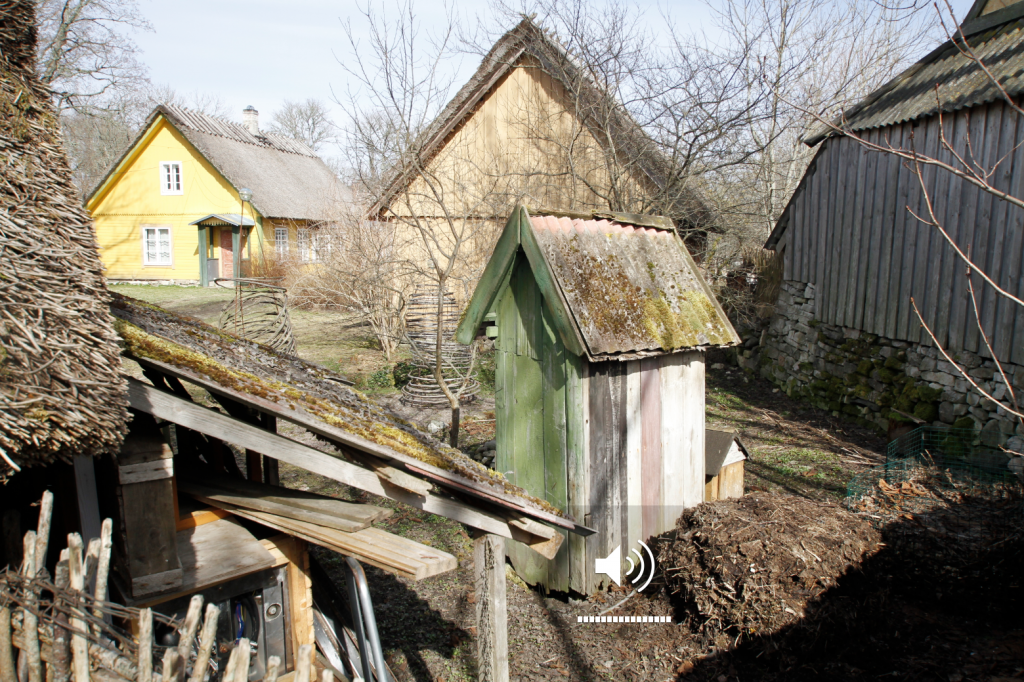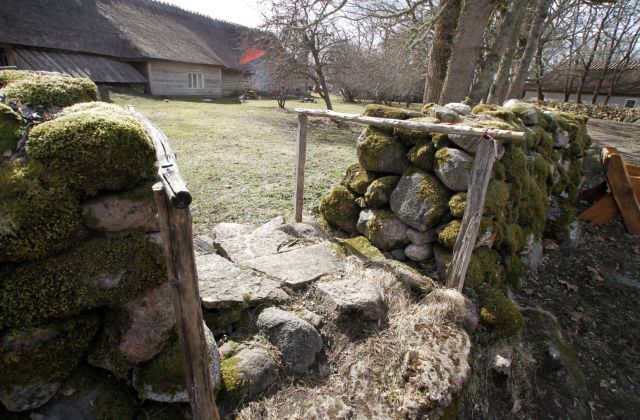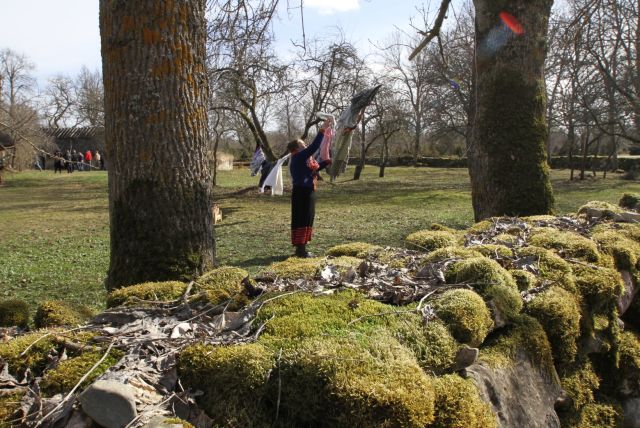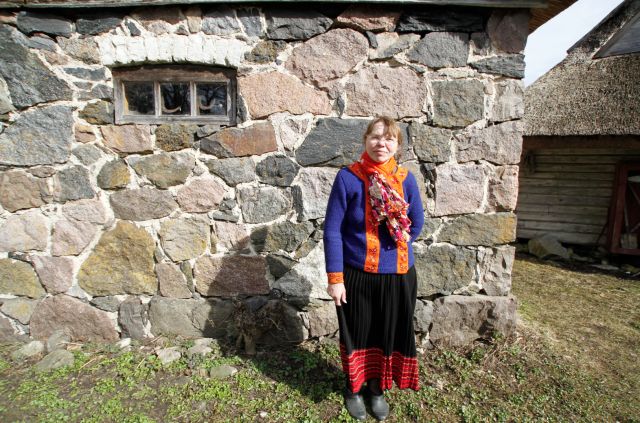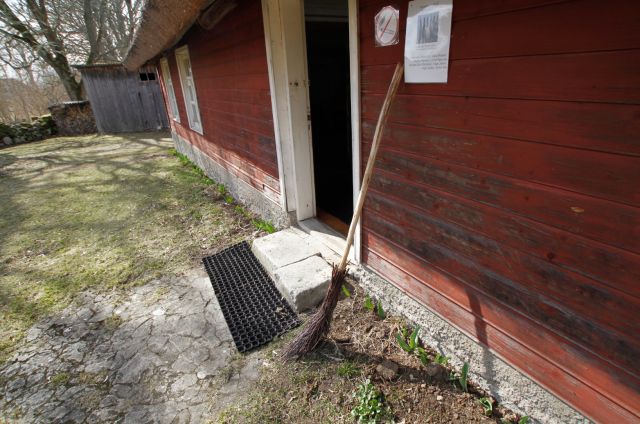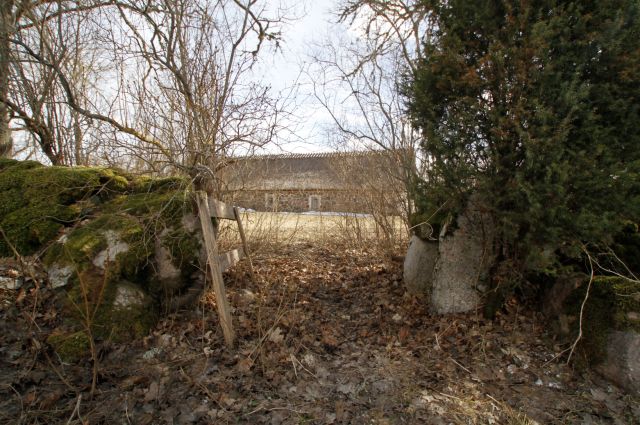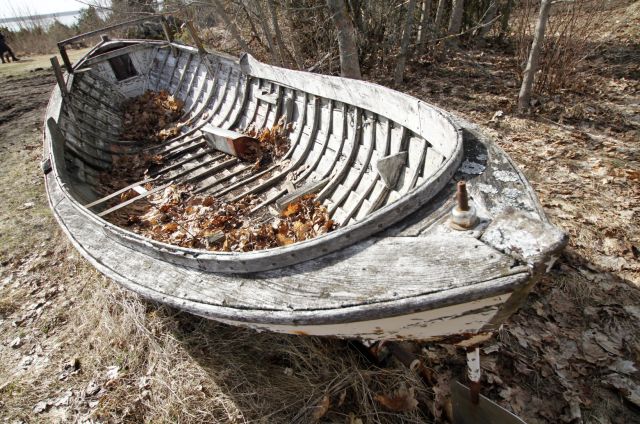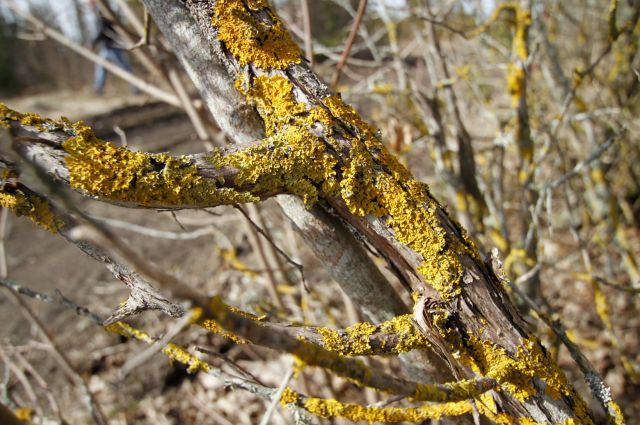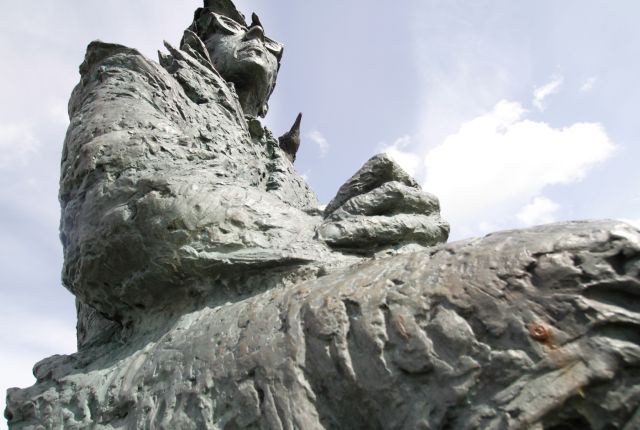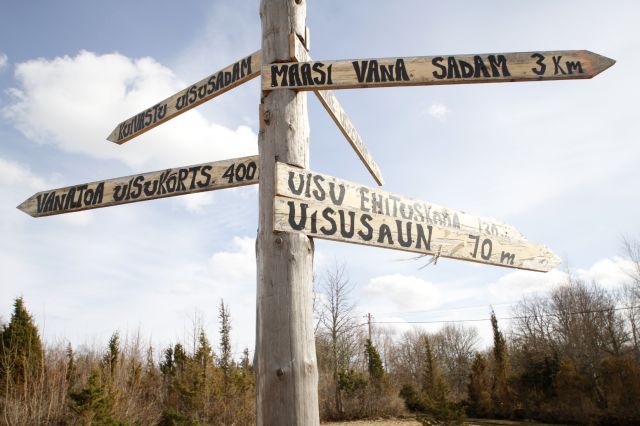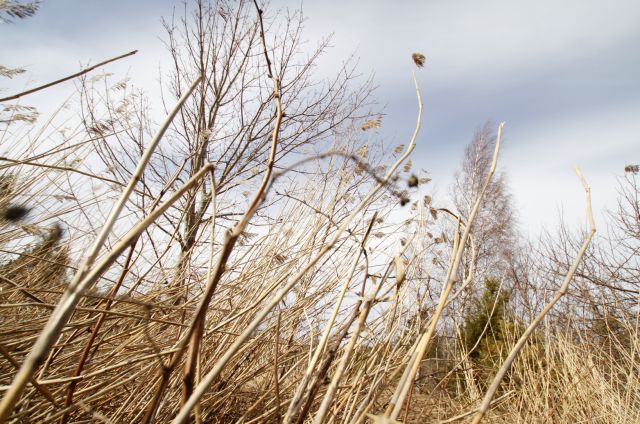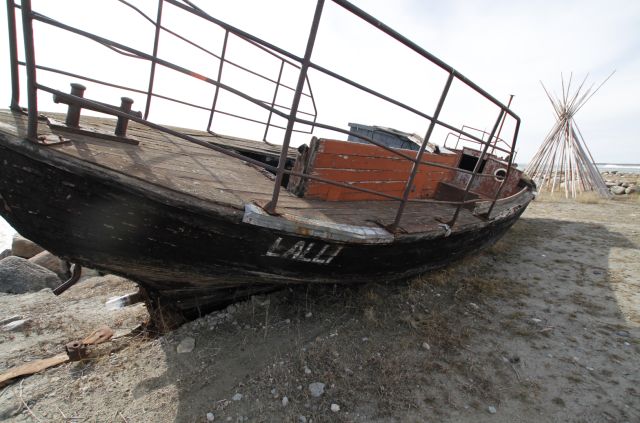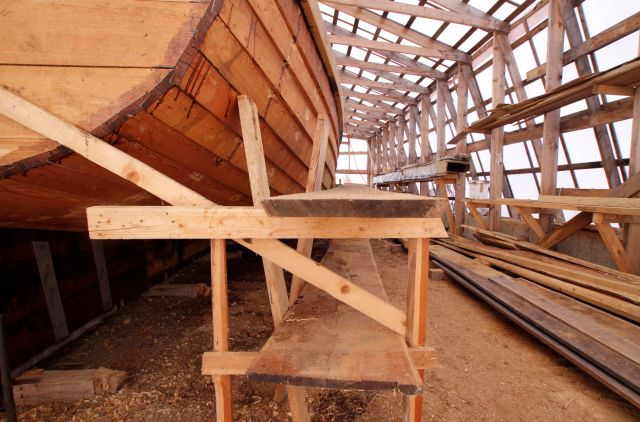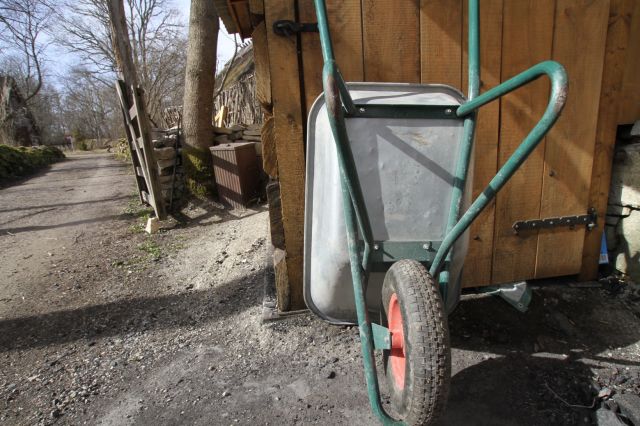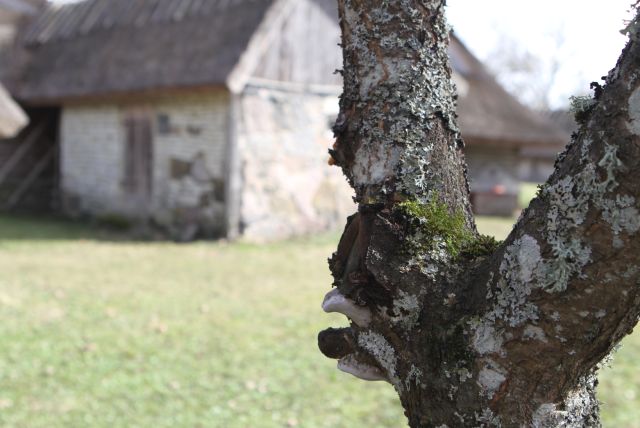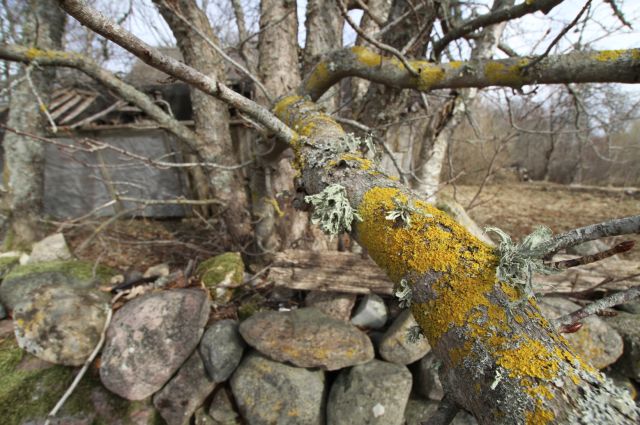A magical part of Muhu Island off the coast of Estonia is its rural charm and the people. Koguva Village, the best preserved 19th century village in Estonia, is located on the Kuivastu, a place where all the buildings are architectural landmarks. The oldest buildings, which date back to the 18th century, are in the middle of the village.
A typical farm from that time consisted of a threshing barn/dwelling house, storehouses, a sauna, stables for animals, and a summer kitchen. Very often the farm also had a smithy. There were separate storehouses for grain, meat, fish and clothing and of course the number of storehouses one had depended on the wealth and size of the farm family.
The stone fences found throughout Koguva village are over 200 years old however the beginnings of the village can be traced to 1532. Now a museum, it was originally named after writer Juhan Smuul and was opened for the first time in the early 1970s. How’s this for an odd fact? During the 1930’s, over 150 people lived in the village, and more than 100 were of those 150 were named Schmuul.
Since 1990, the museum has been called Muhu Museum and is an institution of Muhu parish. People come here for its charm yet etnographers marvel in the village’s uniqueness, which they say is a remarkable example of Estonian peasant architecture.
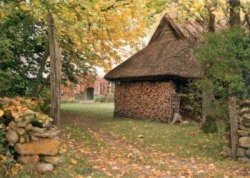 It was usual for unmarried girls in Estonia to sleep in the clothing storehouses during summer months, and so special “sleeping barns” were built for them. Saunas were also common, with the most common one on Muhu being a ‘manure sauna’, which was also the sheep barn. When the family wanted to have a sauna, the sheep were chased out, straw was spread over the manure, and the sauna stove was fired up. The manure made the ‘manure’ sauna especially warm…a little different than how we experience a sauna in modern times.
It was usual for unmarried girls in Estonia to sleep in the clothing storehouses during summer months, and so special “sleeping barns” were built for them. Saunas were also common, with the most common one on Muhu being a ‘manure sauna’, which was also the sheep barn. When the family wanted to have a sauna, the sheep were chased out, straw was spread over the manure, and the sauna stove was fired up. The manure made the ‘manure’ sauna especially warm…a little different than how we experience a sauna in modern times.
I managed to get lost in the village since I ventured off the main narrow gravel road. Suddenly I realized I was walking in circles and not a soul was around…no one to greet me but the wind, a few birds and some hovering trees which promised to protect me from the cold should I end up needing them for the night.
Having been lost before, I realized that tracing my steps wouldn’t work because in this case, I let just one eye do the leading, largely through the lens of my Canon 7D. The place was so charming and so full of history, I felt like a child being read a fairytale for the first time. As it was being read, a princess pulled a 3D version of the story from her book and displayed it on a platter, one large enough for the child to walk into….and there I was.
The only difference was that I wasn’t ten, it wasn’t my first fairytale and the village was real, as was the growing wind which reminded me how foolish I was not to be paying better attention.
Dirt paths wove in the shadow of towering ancient trees between protected buildings and stone fences, most of which were covered in green moss. Farmyards full of apple trees, bright flower beds and flowing leaves whisked about. Further down the road, a coastal meadow scattered with junipers presented me with a view of a windmill, the symbol of Muhu and Saaremaa.
What was most remarkable was how despite the cold, the place had a way of bringing you back a century in time while simultaneously promising a glimpse of what a holiday could be like during warmer summer months. The houses bleached by the Baltic sea wind and the sun and the worn out and weathered wooden boats were a stark reminder that life here at the turn of the century was likely a harsh one .
I couldn’t get enough of it. The moss. The barren trees. The farmhouses. The giant boulders which fenced off living areas. The boats. The emptiness.
Then, I ran into a woman who was hanging clothes on the line and learned that she was a curator of the property.
Her English was impeccable and it was she who led me to a clearing where I found my eager-to-leave and hungry colleagues who were wondering where I had landed.
A place stuck in time.
A reminder of how life was.
Things and people deserted.
A warm and yet rich mustard coats the endless birch trees which lie scattered throughout the property.
One massive sculpture for good measure, perhaps to remind us that its no longer the 1800s and this place isn’t just a dream? As if Juhan Smuul was still lingering around the property, to ensure it was well preserved?
Wood and signage meets sky and clouds. This post didn’t help me find my colleagues nor did it paint a clue as to where I had already been or where I needed to end up.
The wind engulfed me and while it was cold and my hands were losing feeling, the energy of the place kept me warm, like a fairy princess on her way to her long awaited kingdom.
I wondered how often these boats were ever used, if ever.
New ones were being built inside a large structure that sat near the sea’s edge.
The smell of damp wood and sawdust was prominent.
I found myself wanting to add a new coat of fresh paint to this sad overturned fishing boat.
The place makes you want to dive in and go to work. Tethering. Planting. Sawing. Building. Sanding. Shoveling.
Before I left, I ran into a family. The little one had me at “hello” and while they barely spoke English, they welcomed me into their little shop where you could buy honey, handcrafted wooden boards, juniper jam and wool mittens. Around them and their isolated cottage with nothing but a table, bench and fireplace outside, not a soul could be seen, heard or…found.
Things to do in Koguva include the Manniku Handicraft Barn Weaving studio, the Koguva Art Gallery and hikes along nature trails. Other things worth taking in on Muhu Island include the Muhu Museum and Pallasmaa beach, the only small sandy beach in Muhu. Additionally, explore:
- Tupenurme Bluffs: Located on an old shore bank of the Ancylus Lake, located where the Baltic Sea is today some 7,500 to 8,500 years ago.
- Rinsi Orthodox Church: Built in 1873, after a time when many people in Muhu and Saaremaa started to convert to orthodoxy.
- Vahtna Old Harbour Site: Vahtna was the place of main boat connection from Muhu to Saaremaa from the 16th century to the opening of the causeway over the Vaike Vain Strait in 1896.
- Uugu Cliff: This cliff is the largest and most attractive of Muhu’s bluffs, and is located about two kilometers from Nommkula and somewhat inland from the shore.
- Kesselaid: The islet is situated in the Suur Vain straight, between Muhu and the mainland.
- Rannaniidi Bluffs: Five larger and an entire group of smaller bioherms, where the surrounding stone has been worn away is here. The force of ice at work can be seen on the banks, where much of the stone has been polished smooth. The banks are of interest to geologists because here, the various layers of rock and their formation can easily be reconstructed, which is why it is a protected area.
- Hellamaa Orthodox Church: As a result of the faith-changing movement in the 19th century, there are a lot of orthodox people on the island. The church was built in 1866.
- Kuivastu Tavern: Built in 1840, it is located in the seaward chamber of Kuivastu’s old pub house.
- Kuivastu Harbour: The way to Saaremaa from the mainland goes over the Suur Vain strait from Virtsu to the Kuivastu Harvour on Muhu.
- Rassa Village: This is an old village on the coast with stone fences, thatched roofs and narrow streets.
- Laasu Ostrich Farm in the Natse Village: Here, you can see ostriches – African ostriches, South American nandu, Kangaroos and Australian emu.
- St. Catharine’s Gothic Style Fort in Liiva: One of the oldest in Estonia, it was built in the 13th century. The structure is a great example of early Gothic style and Byzantine-influenced mural decorations.
- Uku Stone: It is one of the numerous sacred stones that have been preserved on the island, a stone which has been devoted to an ancient deity Uku. It has 23 artificial cavities which are used for ritual sacrifices. Older recordings even list blood sacrifices.
- Eemu Windmill: The windmill was rebuilt on the historic Eemu farm windmill site. It is a working windmill, now operated as a museum.
All Photo Credits: Renee Blodgett, We Blog the World and Magic Sauce Media and for more on Estonia in general, visit our Estonia page.

Renee Blodgett is the founder of We Blog the World. The site combines the magic of an online culture and travel magazine with a global blog network and has contributors from every continent in the world. Having lived in 10 countries and explored over 90, she is an avid traveler, and a lover, observer and participant in cultural diversity. She is also the founder of the Magdalene Collection, a jewelry line dedicated to women’s unsung voices and stories, and the award-winning author of the bestselling book Magdalene’s Journey
She is founder of Blue Soul Media and co-founder of Blue Soul Earth as well as the producer and host of the award-winning Blue Soul CHATS podcast, that bridges science, technology and spirituality. Renee also founded Magic Sauce Media, a new media services consultancy focused on viral marketing, social media, branding, events and PR. For over 20 years, she has helped companies from 12 countries get traction in the market. Known for her global and organic approach to product and corporate launches, Renee practices what she pitches and as an active user of social media, she helps clients navigate digital waters from around the world. Renee has been blogging for over 16 years and regularly writes on her personal blog Down the Avenue, Huffington Post, BlogHer, We Blog the World and other sites. She was ranked #12 Social Media Influencer by Forbes Magazine and is listed as a new media influencer and game changer on various sites and books on the new media revolution. In 2013, she was listed as the 6th most influential woman in social media by Forbes Magazine on a Top 20 List.
Her passion for art, storytelling and photography led to the launch of Magic Sauce Photography, which is a visual extension of her writing, the result of which has led to producing six photo books: Galapagos Islands, London, South Africa, Rome, Urbanization and Ecuador.
Renee is also the co-founder of Traveling Geeks, an initiative that brings entrepreneurs, thought leaders, bloggers, creators, curators and influencers to other countries to share and learn from peers, governments, corporations, and the general public in order to educate, share, evaluate, and promote innovative technologies.

